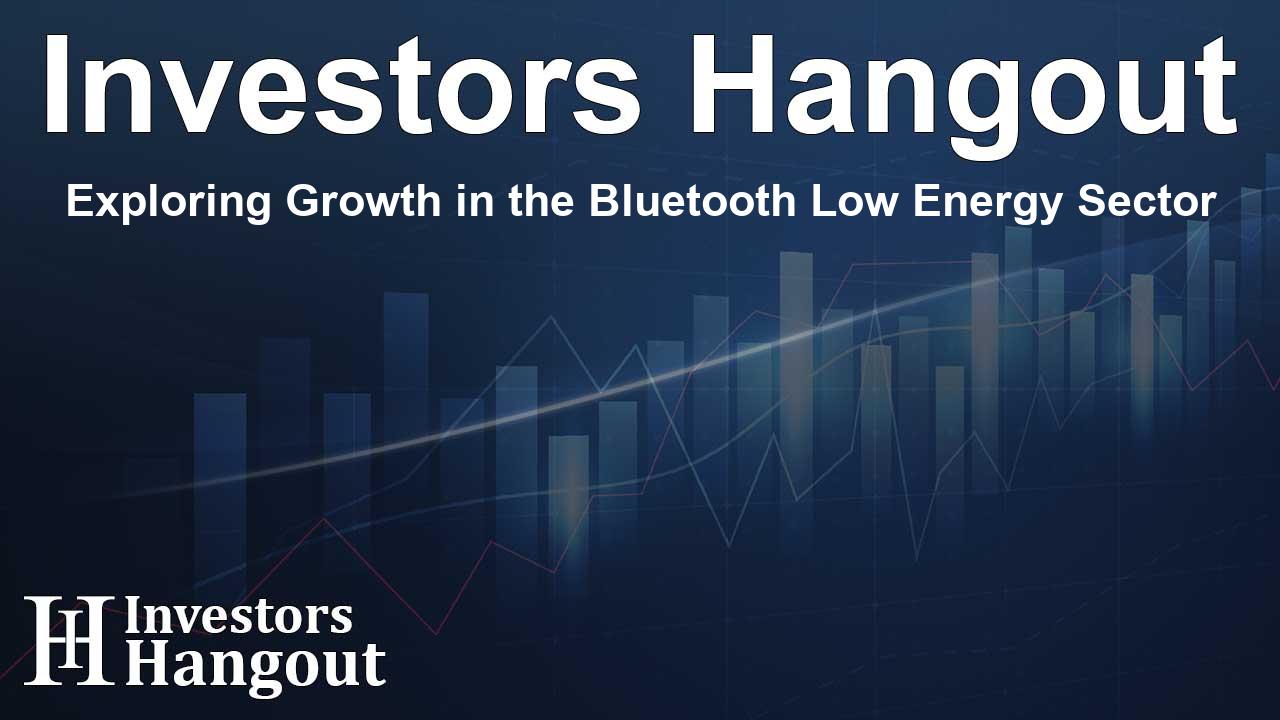Exploring Growth in the Bluetooth Low Energy Sector

Bluetooth Low Energy Market Overview
The Bluetooth Low Energy (BLE) market is witnessing remarkable growth, with projections showing that it could reach USD 38.72 billion by the year 2032. According to recent analyses, the market was valued at USD 11.59 billion in 2023, indicating a substantial compound annual growth rate (CAGR) of 16.35% from 2025 to 2032. As the demand for energy-efficient connectivity continues to surge, BLE is emerging as a pivotal technology in the rapidly expanding Internet of Things (IoT) landscape.
Drivers of Bluetooth Low Energy Adoption
One of the most significant factors contributing to the growth of the BLE market is the increasing reliance on low-power wireless connectivity across various sectors. This includes applications in smart homes, healthcare, and wearables, with industries expanding their portfolios to incorporate devices like medical wearables and smart lighting solutions. Furthermore, the automotive sector is discovering the advantages of BLE, utilizing it for vehicle diagnostics and keyless entry functionalities.
Technological Innovations
The arrival of Bluetooth 5.0 and subsequent advancements have enhanced BLE's performance, including improved range, speed, and support for mesh networking. This has made BLE an ideal choice for smart cities and streamlined industrial automation processes. As technological innovations continue, the capability of BLE to communicate efficiently and safely with numerous devices becomes increasingly vital.
Market Leaders and Their Impact
Several players are leading the charge within the BLE market. Companies like Nordic Semiconductor, Qualcomm Technologies, and Texas Instruments are at the forefront, providing essential components and solutions to drive BLE technology's growth and integration into everyday applications. These companies have developed products tailored to specific market needs, ensuring widespread adoption and fostering competition that further enhances product offerings.
Market Segmentation
The BLE market can be segmented based on technology, network topology, and application areas. Integrated modules have taken the lead due to their compact design, cost-effectiveness, and ease of implementation, making them favorable in consumer electronics. Conversely, discrete solutions are registering rapid growth as they cater to environments requiring customizability and superior performance.
Application Areas Transforming the Market
Bluetooth Low Energy is finding applications in various sectors — from consumer electronics and healthcare to automotive and industrial automation. The healthcare domain, in particular, benefits significantly from medical wearables, which track patient data with low power consumption, emphasizing the importance of BLE in maintaining effective healthcare delivery systems.
Regional Analysis
Geographically, North America has dominated the BLE market by taking significant revenue shares, thanks to its established digital infrastructure and significant investments in BLE technologies. However, fast-growing markets like the Asia-Pacific region are experiencing rapid expansion, propelled by increased adoption of smart devices driven by urbanization and technological advancements.
Importance of Bluetooth 5.x
The introduction of Bluetooth 5.x has transformed the market, known for its high-speed data transfer, long-range capabilities, and robust performance, particularly in smart home applications. Its penetration in various sectors, including wearables and connected vehicles, stands out as a major factor in the growth of the BLE market, further supported by its backward compatibility, which eases integration into existing systems.
Future Outlook of the BLE Market
The outlook for Bluetooth Low Energy is promising, with a strong demand anticipated in the coming years. Factors such as the growing trend of connectivity in everyday life, innovations in BLE technology, and the expansion of the IoT ecosystem are set to sustain market momentum. Companies in this sector are continuously innovating, striving to offer improved solutions that cater to the needs of consumers and industries alike.
Frequently Asked Questions
What is the projected size of the Bluetooth Low Energy market?
The Bluetooth Low Energy market is projected to reach USD 38.72 billion by 2032.
What factors are driving growth in the BLE market?
Key drivers include the rising adoption of energy-efficient connectivity in IoT devices, healthcare applications, and the automotive sector.
Who are the leading companies in the BLE market?
Major players include Nordic Semiconductor, Qualcomm Technologies, Texas Instruments, and STMicroelectronics.
What is the significance of Bluetooth 5.x technology?
Bluetooth 5.x enhances performance with high-speed data transfer and improved range, making it ideal for modern applications.
How is the BLE market segmented?
The BLE market is segmented by technology, network topology, and application areas, including consumer electronics and healthcare.
About The Author
Contact Addison Perry privately here. Or send an email with ATTN: Addison Perry as the subject to contact@investorshangout.com.
About Investors Hangout
Investors Hangout is a leading online stock forum for financial discussion and learning, offering a wide range of free tools and resources. It draws in traders of all levels, who exchange market knowledge, investigate trading tactics, and keep an eye on industry developments in real time. Featuring financial articles, stock message boards, quotes, charts, company profiles, and live news updates. Through cooperative learning and a wealth of informational resources, it helps users from novices creating their first portfolios to experts honing their techniques. Join Investors Hangout today: https://investorshangout.com/
The content of this article is based on factual, publicly available information and does not represent legal, financial, or investment advice. Investors Hangout does not offer financial advice, and the author is not a licensed financial advisor. Consult a qualified advisor before making any financial or investment decisions based on this article. This article should not be considered advice to purchase, sell, or hold any securities or other investments. If any of the material provided here is inaccurate, please contact us for corrections.
